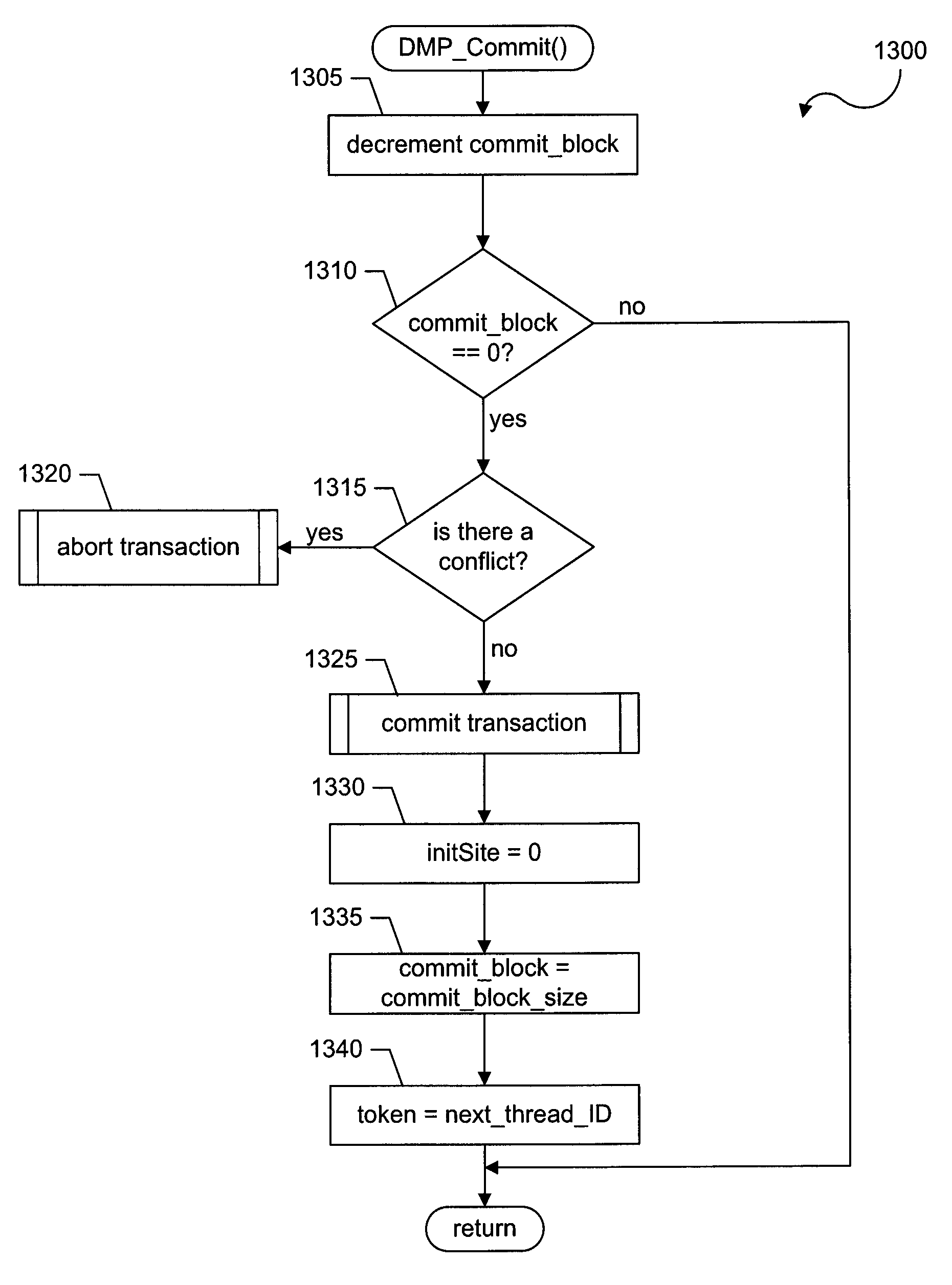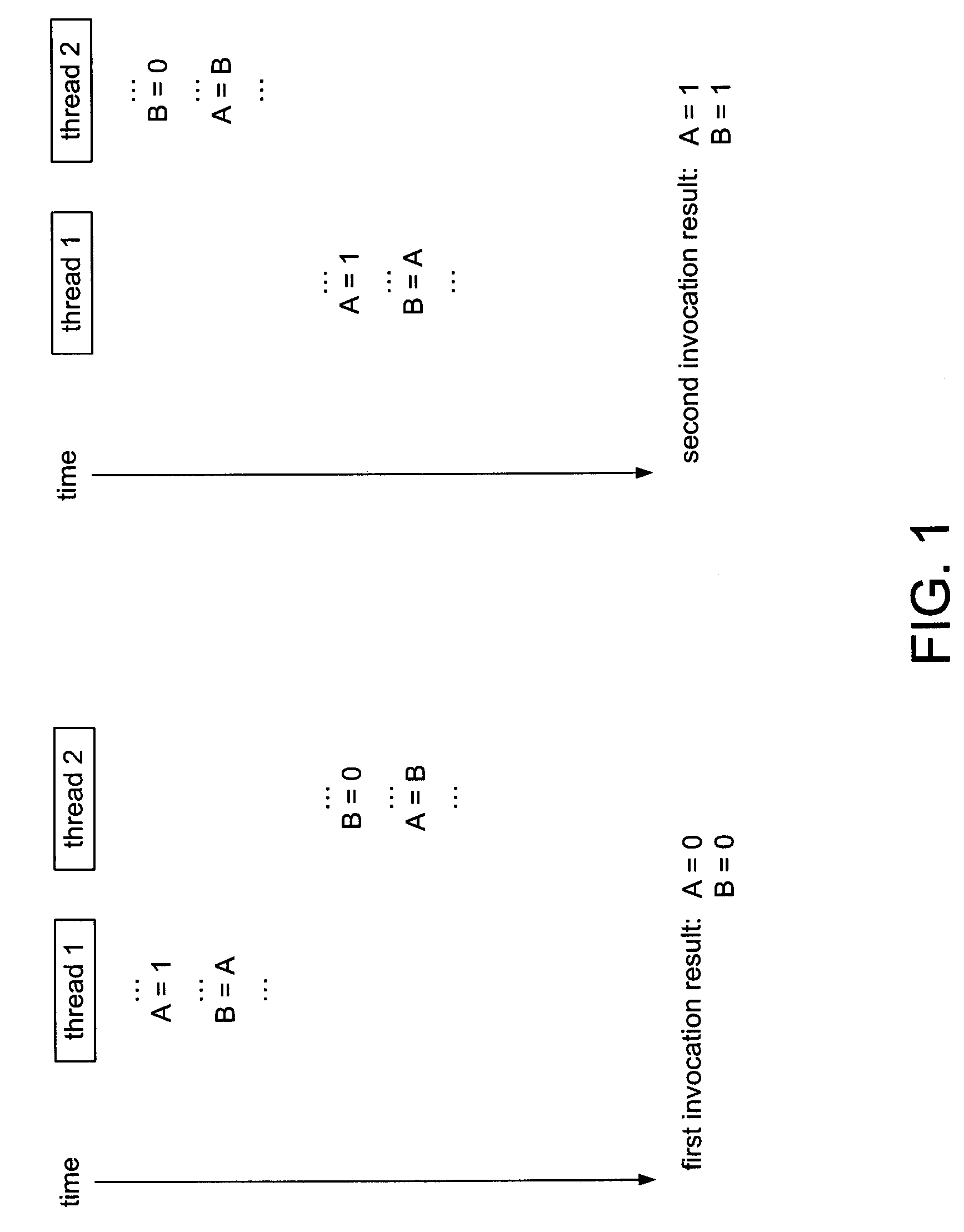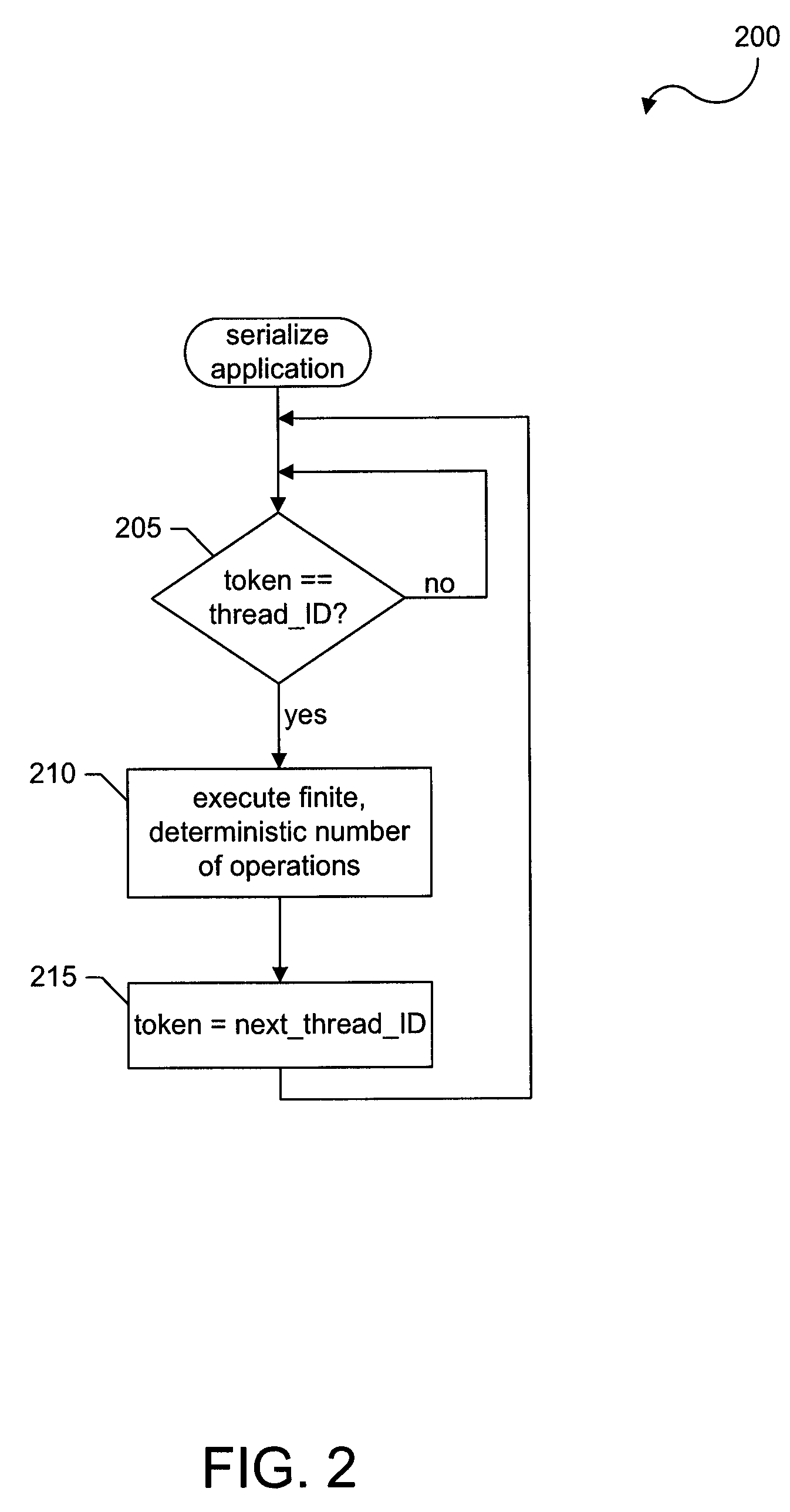Critical path deterministic execution of multithreaded applications in a transactional memory system
a transactional memory system and multi-threaded application technology, applied in multi-programming arrangements, instruments, computation using denominational number representation, etc., can solve problems such as software developers who explicitly implement synchronization mechanisms also spend a substantial amount of time debugging their synchronization code, and software defects resulting from synchronization errors are typically identified and solved
- Summary
- Abstract
- Description
- Claims
- Application Information
AI Technical Summary
Benefits of technology
Problems solved by technology
Method used
Image
Examples
Embodiment Construction
[0034]Conventional systems, such as deterministic replay systems, do not adequately resolve the problems associated with the nondeterministic behavior in the development of multithreaded applications. Additionally, no existing systems reduce or attempt to resolve the problems associated with nondeterministic behavior in the deployment of multithreaded applications. Accordingly, a hardware and / or software facility for deterministic multiprocessing of multithreaded applications (“the facility”) has been developed. As used herein, the term deterministic multiprocessing refers to a technique by which given the same input to a multithreaded application, the same output is produced by the multithreaded application. The facility simplifies the process of developing multithreaded applications, for example, by freeing developers from the burden of synchronizing thread accesses to shared resources. Additionally, the facility improves the reliability of such multithreaded applications when the...
PUM
 Login to View More
Login to View More Abstract
Description
Claims
Application Information
 Login to View More
Login to View More - R&D
- Intellectual Property
- Life Sciences
- Materials
- Tech Scout
- Unparalleled Data Quality
- Higher Quality Content
- 60% Fewer Hallucinations
Browse by: Latest US Patents, China's latest patents, Technical Efficacy Thesaurus, Application Domain, Technology Topic, Popular Technical Reports.
© 2025 PatSnap. All rights reserved.Legal|Privacy policy|Modern Slavery Act Transparency Statement|Sitemap|About US| Contact US: help@patsnap.com



